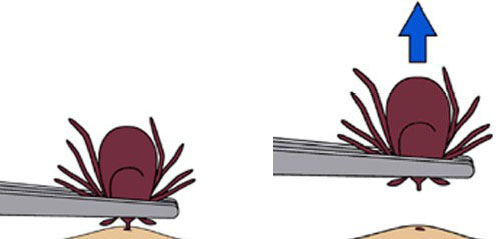Tick-Borne Diseases
Ticks are arachnids, relatives of spiders that live in wooded areas, brushy fields, along trails and around homes. They are also parasites that survive by feeding on the blood of animal hosts, including humans. Through their feeding, ticks can significantly impact the quality of life and health of humans and pets. Most importantly, some species of ticks may transmit diseases, which can result in mild to serious illness or death. Proper protection from ticks and prompt removal are crucial to preventing infection.
Tick Facts Brochure
Preventing Tick-borne Diseases
Tick-borne diseases can be transmitted only by the bite of an infected tick. An infected animal or person cannot pass the infection on to another animal or person. Ticks normally become infected by taking a blood meal from an infected animal. Use caution when removing ticks from pets and be sure to check yourself and loved ones after spending time in ticks’ habitat.
Ohio has seen a significant increase in the black-legged tick populations in recent years. Blacklegged ticks, also known as deer ticks, are the only known vector of Lyme disease in the eastern U.S. Deer ticks are somewhat smaller and darker than our other important tick species and the adults are active during the late fall – early spring, when the other species are dormant.
Rocky Mountain spotted fever (RMSF) is caused by a bacteria carried primarily by the American dog tick. Not all ticks are infected and an infected tick is usually attached to the host for four to six hours before it transmits disease. Adult American dog ticks look for large hosts such as dogs, but they will also feed on humans. They are the most common ticks in Ohio.
The risk of exposure to ticks and disease can be reduced by using these precautions:
- Avoid tick-infested areas (i.e. wooded or weedy areas).
- If exposure is unavoidable, tuck pants into sock tops or boots.
- Wear light-colored clothing to make it easier to find crawling ticks.
- Use repellents and follow label instructions carefully.
- Check children for ticks frequently.
- Use caution when handling ticks and dispose of properly.
Dogs:
- Dogs can become infected with tick-borne diseases.
- Dogs should be kept in well-mowed areas during tick season (April-September).
- Treatments are available to control ticks on dogs. Always follow label instructions.
- Inspect dogs for ticks every day. Ticks should be handled with caution and disposed of safely.
- Keep yard and outdoor play areas well mowed to discourage tick infestation.
Tick removal:
If a tick is attached, remove it as soon as possible; this reduces your risk of infection.
- Use fine-tipped tweezers to grasp the tick as close to the skin’s surface as possible.
- Pull upward with steady, even pressure. Don’t twist or jerk the tick; this can cause the mouth-parts to break off and remain in the skin. If this happens, remove the mouth-parts with tweezers. If you are unable to remove the mouth easily with clean tweezers, leave it alone and let the skin heal.
- After removing the tick, thoroughly clean the bite area and your hands with rubbing alcohol or soap and water.
- Never crush a tick with your fingers. Dispose of a live tick by putting it in alcohol, placing it in a sealed bag/container, wrapping it tightly in tape, or flushing it down the toilet.
Do not use a flame or cigarette to remove a tick. This may cause the tick to burst and increase disease risk.

